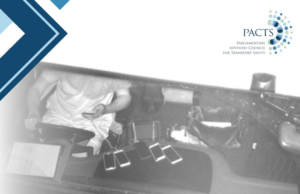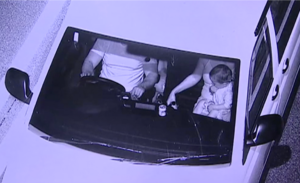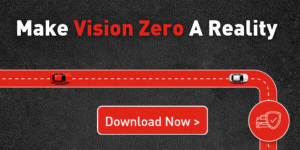The UK manager of road safety technology company Acusensus says he feels there is “real momentum” in road safety authorities embracing new technology to spot distracted drivers and those who don’t wear a seatbelt.
The company’s “Heads Up” Artificial Intelligence technology uses specially equipped cameras which can see through the windscreen and into the vehicle, identifying cases where people are using their phones or not wearing a seatbelt as they drive past.
Safer Roads Greater Manchester is using Acusensus cameras in a traffic survey to understand how many drivers still choose to break the law. It says this will be used to refine future road safety campaigns aiming to improve compliance of mobile phone and seat belt use by drivers.
Meanwhile, in Devon and Cornwall, installations at three sites across the counties have spotted 109 children not wearing seat belts, among over 2,000 people spotted committing that offence on the counties’ A-roads in July and August. The region is the first to introduce cameras on a long term, operational basis and will be using the results for enforcement purposes.
Acusensus UK Manager Geoff Collins has been working with authorities to deliver the projects and says the reaction has been extremely encouraging: “I am getting more and more calls from people tasked with making our roads safer, all wanting to know how they can utilise our technology on their roads,” he explained. “Not only is there a real momentum from road safety professionals, but also with public acceptance – even in the darker corners of social media comments, the vast majority of people welcome efforts to stop those flouting the law by using a mobile at the wheel, and not bothering to wear a seatbelt.”
The Parliamentary Advisory Council for Transport Safety says that three in ten vehicle occupants killed in road collisions were found to not be wearing a seatbelt, while the DfT’s Think! campaign points out that a driver is four times more likely to crash if using a mobile phone whilst they are driving.
When the Acusensus software identifies a possible case of distracted driving or of vehicle occupants not wearing a seatbelt, anonymised images are sent to a UK based secure cloud for human review, which validates if a potential offence has occurred. A further secondary check then allows for the creation of an offence file, which can be used by the police for prosecution, and indeed has been with police across the country.
Other Acusensus trials, involving National Highways and the consultancy AECOM, have taken place in ten police forces across the country with plans for long-term installations in more areas.
(Picture – Acusensus/Devon and Cornwall Police)























